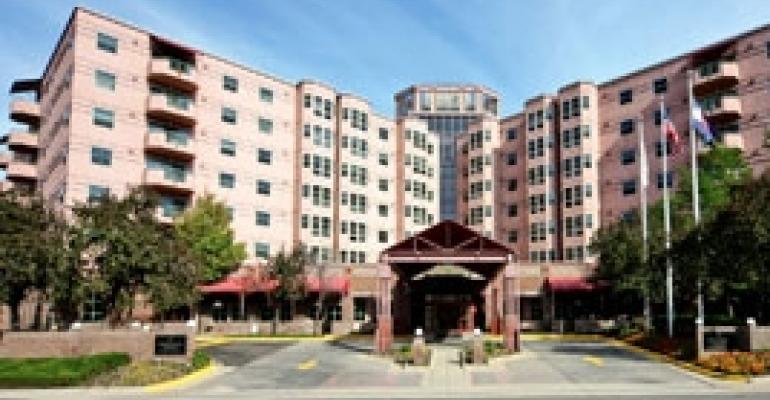Do seniors fit in with downtown living? As strengthening demand leads to increased seniors housing construction, more communities are examining proposals by developers who want to take infill sites in popular metropolitan areas.
Some politicians disagree.
Looking to create or revive exciting nightspots or destination locations in their sagging downtowns, communities such as Sanford, Fla. and Mesa, Ariz. this year successfully blocked seniors housing from city centers. Officials cited parking and traffic concerns, or said they wanted to protect seniors from hoped-for entertainment district plans, which would be too big and noisy for residents.
H. Todd Kaestner, executive vice president of corporate development of Brentwood, Tenn.-based Brookdale Senior Living Inc., says there are two methods of site selection today: A developer will either focus on where middle-to-upper-income adults live and work (the adult children of seniors, typically between 45 and 64 years old), or in residential areas with large existing populations of the elderly.
The general population, he says, is somewhat uneducated about the footprint of a seniors housing property. “They just don’t generate traffic like a regular apartment building,” Kaestner says. “At our properties, we modify the staff shift times to not interfere with heavy traffic. They’re great neighbors, they’re not out in their driveway blaring their stereos. And while there are fire department calls, in my 28 years in this business visiting these locations I’ve never seen an ambulance blaring its siren to or from the property.”
A downtown property does have to be well thought out, he says. Brookdale has a few downtown properties, such as the Heritage Club and Parkplace in Denver. “So much depends on the culture of the city,” he says. “I think it’s more accepted in New Jersey, New York or Philadelphia, where there’s more high-rise living, but if you tried to take it to a southern city, it may not work. I’ve seen a high-rise elderly project fail in Louisville because there just weren’t the shopping needs around the property. What’s niche you are, what’s the culture and what’s in the market all have to match up.”

Steve Walling, vice president of acquisitions for Emeritus Senior Living, said his company has never had a problem with a community. However, he admits his firm shies away from downtown development. “The costs are too high,” he says. “We’re not looking to spend anything more than $25,000 per unit, and we’re not looking at high-rise uses.”
Turning the “we don’t want you” attitude on its ear, Walling’s firm itself has a list of almost 30 businesses that it would prefer to keep far away from its seniors housing properties. Among these are mobile home parks, adult bookstores and strip clubs, car washes, flea markets, bowling alleys, dance halls, thrift stores, movie theaters, colleges, veterinary hospitals, fast-food facilities and even mortuaries.
He says the best place to locate a seniors housing property is near a downtown, but not in it. “I think you might have some interest in downtowns by 55-plus, independent communities, but the average 83-year-old resident of assisted living just wants to be on the same floor as the dining hall, they don’t want to deal with stairs or elevators.”
Orlando, Fla.-based CNL Financial Group also owns senior properties in a few downtowns, such as Washington, D.C. and in California, in Santa Monica and Beverly Hills. Kevin Maddron, senior vice president of asset management, says there are upsides and downsides to locating a property in a downtown.
“If you have a vibrant downtown, there’s a lot of nearby activities for seniors to do with their adult children,” Maddron says. “We have an assisted living property like that near St. Louis, Miss. that we partnered with locally-based Provision Living. The housing is in a mixed-use complex is in downtown Webster Groves, in an infill location across from the City Hall, and walking distance to restaurants and shops.”
Partnering on mixed-use is almost a necessity for downtown senior living, Maddron says, as the per-square-foot costs are usually too high for just a standalone property. However, mixed-use can cause problems with seniors housing lenders, who can be uncomfortable with other uses at a property. “The code requirements can create some challenges, with HUD in particular,” Maddron says. “Also, it’s best to partner with a company that knows how to market and handle retail, it’s just too different a business.”
Provision Living Principal Todd Spittal says his company has two downtown-type properties in the St. Louis area, including a redevelopment of an old hotel in St. Louis Hills. He says both properties, which feature assisted living and memory care, have seniors who like to walk and ride to the amenities in the downtown. These locations were a case of the seniors who had lived in the area for years, and wanted to stay, he says.
“It really depends on the downtown if they have these friendly neighborhoods, but the seniors love to take in what a downtown has to offer, including shops and restaurants,” Spittal says. “It is hard to understand why a downtown would turn down an elderly facility to make it move five to six miles down the road.”

